Islamic art in Andalusia, also known as Al-Andalus, refers to the artistic traditions and styles developed in the Islamic Iberian Peninsula between the VIII and the XV centuries. During this period of time, Spain witnessed the heyday of the Islamic civilization, which significantly influenced the art and architecture of the region.
One of the brightest examples of the Islamic art in Andalusia is the Alhambra, a palace and fortress complex located in Granada. The Alhambra is considered to be one of the most important examples of Islamic architecture and is a UNESCO World Heritage Site.
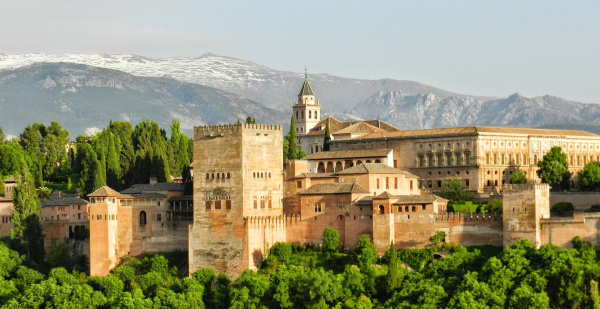
Pablo Valerio/Pixabay
The Alhambra was built by the Moors in the XIV century during the Nasrid dynasty and is one of the most visited tourist attractions in Spain.
The palace complex consists of several buildings, including the Alcazaba (fortress), the Palacio de Carlos V (Charles V Palace) and the Palacios Nazaríes (Nasrid palaces). The Nasrid Palaces, which were the residence of the Sultan and his court, are the best known and best preserved parts of the Alhambra. They are decorated with intricate geometric designs and calligraphy, as well as colorful tiles known as zilli.
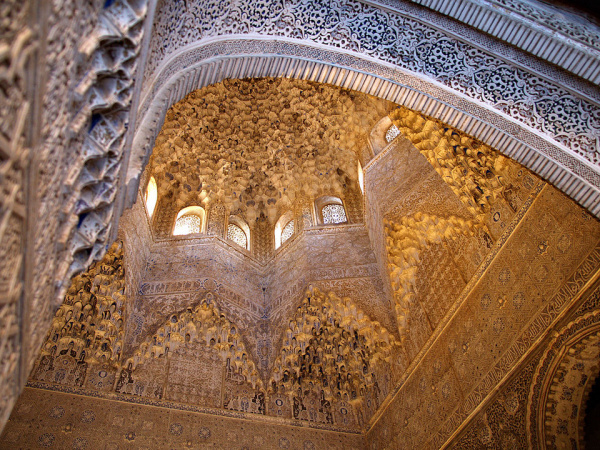
jvwpc/Creative Commons 2.0
The Alhambra also has several gardens, including the Generalife, which was the summer residence of the Sultan and his court. The gardens include pools, fountains and pavilions and are considered to be one of the most beautiful examples of Islamic garden design.
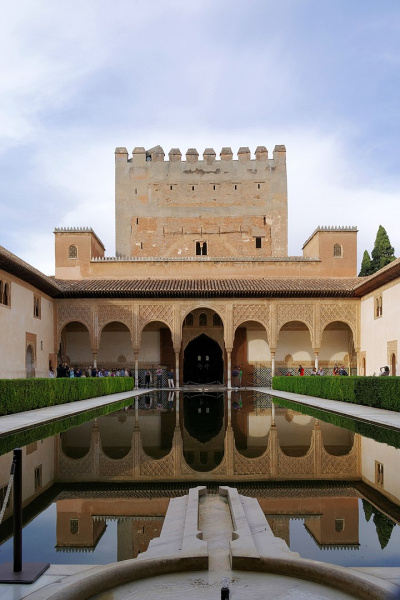
Berthold Werner/Creative Commons 3.0
The Alhambra’s decoration is characterized by the use of arabesques (interwoven geometric patterns) and inscriptions, often using the technique called ‘epigraphic relief’, where inscriptions appear on the surface of low-relief walls. The decoration also includes the use of color, the most common being red and blue on a white background.
Apart from its architectural and decorative beauty, the Alhambra is also of great historical and cultural significance. It was the last stronghold of Muslim Spain, while the palace complex had been the centre of the last Muslim kingdom on the peninsula before it was seized by Catholic monarchs in 1492. The Alhambra was a source of inspiration for many artists, writers and intellectuals around the world.
Overall, the Alhambra bears witness to the rich history and culture of Islamic Spain and is a symbol of the craftsmanship and creativity of the artisans who built it.
Another significant example of Islamic art in Andalusia is the Great Mosque of Cordoba, built in the VIII century. The mosque has horseshoe-shaped arches, richly decorated with tiles and intricate geometric patterns.
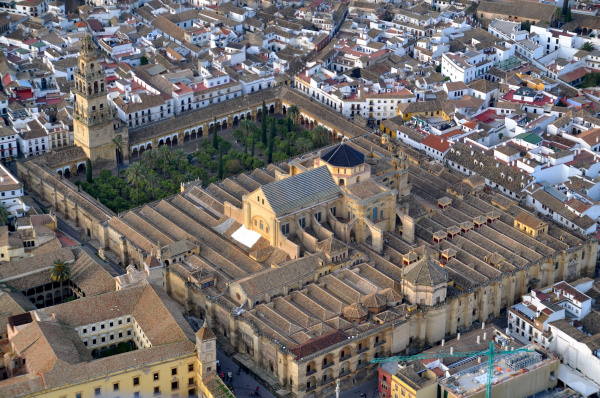
Toni Castillo Quero/Creative Commons 2.0
The Great Mosque of Cordoba, also known as the Mesquita, is a stunning architectural masterpiece. It is also a UNESCO World Heritage Site.
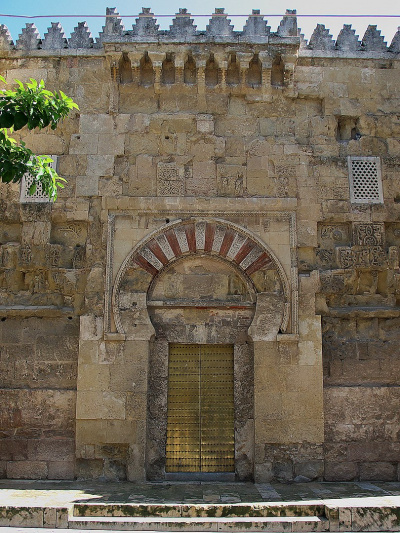
José Luis Filpo/Creative Commons 2.0
The mosque was originally built during the Muslim Umayyad dynasty. It expanded over centuries and reached its present form in the X century. The mosque looks like a forest, with tree trunks imitating more than 856 columns, and horseshoe-shaped arches creating a mesmerizing pattern of light and shadow. The arches are made of red and white voussoirs, and the columns – of jasper, onyx and marble.
The horseshoe-shaped arches are a distinctive feature of Umayyad architecture. They are decorated with patters made with multicolored stones. The arches also have inscriptions in the Arabic language which contain verses from the Quran and the names of the builders.
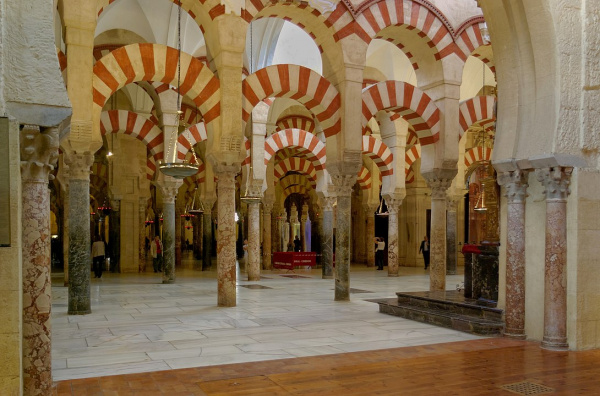
Berthold Werner/Creative Commons 3.0
The mosque also houses the famous Mihrab, which is a prayer niche pointing in the direction of Mecca.
In the XVI century, after the Spanish Reconquista, Catholic monarchs ordered that the mosque be turned into a cathedral. The nave was demolished, while a Renaissance-style cathedral was built in the centre of the mosque.
The Great Mosque of Cordoba is a unique combination of Islamic and Christian architecture. It is a testament to the rich history of Cordoba and different cultures that influenced it over the centuries. Today it remains one of the most popular tourist attractions in Spain and is a must-see for anyone interested in history and architecture of the Islamic world.
The mosque is open to visitors every day, except for religious holidays, such as Christmas and Easter.
Islamic art in Andalusia also includes folk crafts. They are pottery, textile and metalwork. Pottery from this period is famous for its vibrant colors. Textile, such as silk and velvet, were also highly valued and often used to decorate clothes, carpets and other decorative objects. Metalwork, such as brass and copper, were very popular and often used to create candelabra, lamps and other decorative objects.
In conclusion, Islamic art in Andalusia is a rich and varied tradition, reflecting the cultural and artistic achievements of the Islamic civilization that once flourished on the Iberian Peninsula. Examples of this art can still be seen today in the form of architectural monuments, decorative objects that demonstrate the skill and creativity of the craftsmen who created them.
GSV "Russia - Islamic world"
Photo: kallerna/Creative Commons 4.0
